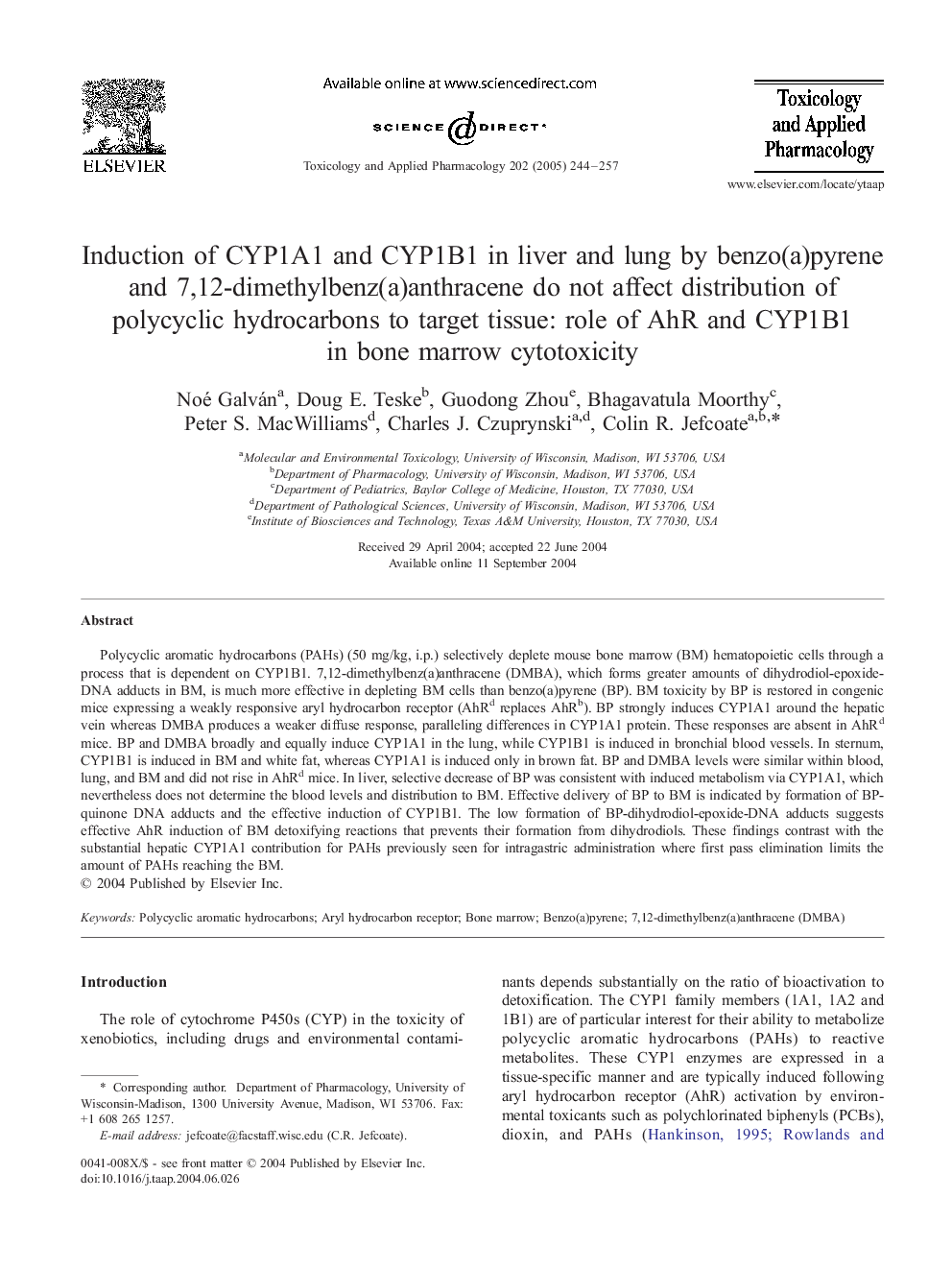| Article ID | Journal | Published Year | Pages | File Type |
|---|---|---|---|---|
| 9018032 | Toxicology and Applied Pharmacology | 2005 | 14 Pages |
Abstract
Polycyclic aromatic hydrocarbons (PAHs) (50 mg/kg, i.p.) selectively deplete mouse bone marrow (BM) hematopoietic cells through a process that is dependent on CYP1B1. 7,12-dimethylbenz(a)anthracene (DMBA), which forms greater amounts of dihydrodiol-epoxide-DNA adducts in BM, is much more effective in depleting BM cells than benzo(a)pyrene (BP). BM toxicity by BP is restored in congenic mice expressing a weakly responsive aryl hydrocarbon receptor (AhRd replaces AhRb). BP strongly induces CYP1A1 around the hepatic vein whereas DMBA produces a weaker diffuse response, paralleling differences in CYP1A1 protein. These responses are absent in AhRd mice. BP and DMBA broadly and equally induce CYP1A1 in the lung, while CYP1B1 is induced in bronchial blood vessels. In sternum, CYP1B1 is induced in BM and white fat, whereas CYP1A1 is induced only in brown fat. BP and DMBA levels were similar within blood, lung, and BM and did not rise in AhRd mice. In liver, selective decrease of BP was consistent with induced metabolism via CYP1A1, which nevertheless does not determine the blood levels and distribution to BM. Effective delivery of BP to BM is indicated by formation of BP-quinone DNA adducts and the effective induction of CYP1B1. The low formation of BP-dihydrodiol-epoxide-DNA adducts suggests effective AhR induction of BM detoxifying reactions that prevents their formation from dihydrodiols. These findings contrast with the substantial hepatic CYP1A1 contribution for PAHs previously seen for intragastric administration where first pass elimination limits the amount of PAHs reaching the BM.
Keywords
Related Topics
Life Sciences
Environmental Science
Health, Toxicology and Mutagenesis
Authors
Noé Galván, Doug E. Teske, Guodong Zhou, Bhagavatula Moorthy, Peter S. MacWilliams, Charles J. Czuprynski, Colin R. Jefcoate,
